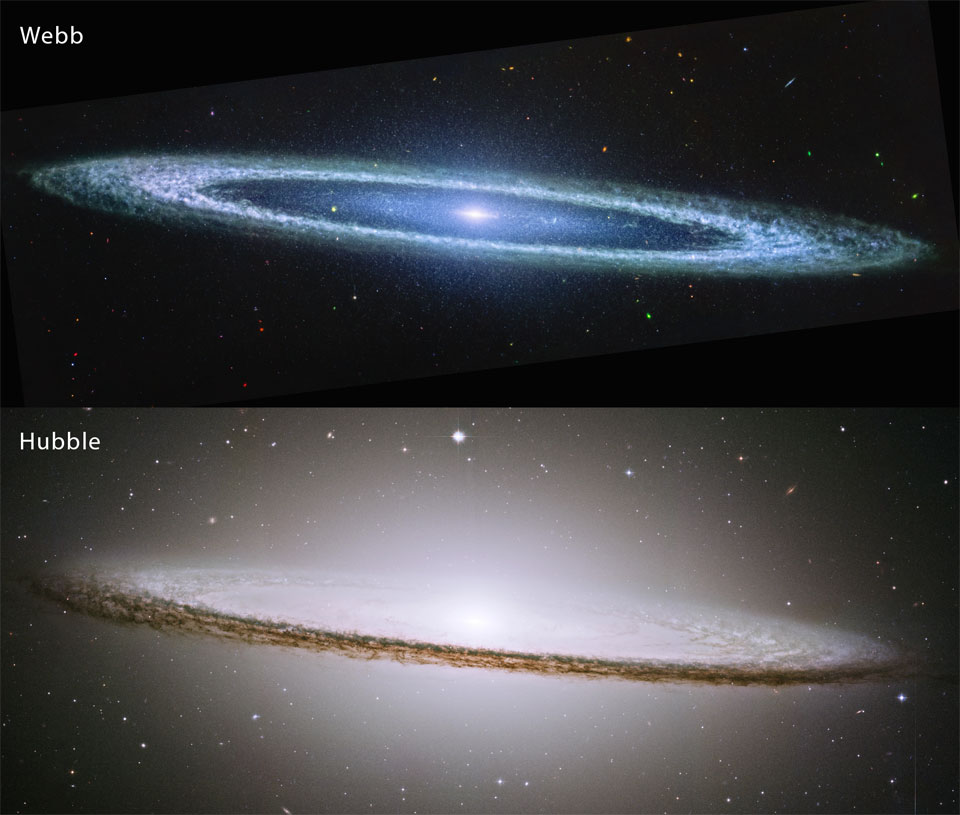Nombre total de pages vues
29/11/2024
ASTRONOMIE - La Voie Lactée au Cervin - Suisse
ASTRONOMY - Messier 4
2024 November 29
Image Credit & Copyright: Steve Crouch
Explanation: Messier 4 can be found west of bright red-giant star Antares, alpha star of the constellation Scorpius. M4 itself is only just visible from dark sky locations, even though the globular cluster of 100,000 stars or so is a mere 5,500 light-years away. Still, its proximity to prying telescopic eyes makes it a prime target for astronomical explorations. Recent studies have included Hubble observations of M4's pulsating cepheid variable stars, cooling white dwarf stars, and ancient, pulsar orbiting exoplanet PSR B1620-26 b. This sharp image was captured with a small telescope on planet Earth. At M4's estimated distance it spans about 50 light-years across the core of the globular star cluster.
28/11/2024
METEOROLOGIE - Vagues nuageuses en Republique Tchèque
ASTRONOMY - NGC 206 and the Star Clouds of Andromeda
2024 November 28
Image Credit & Copyright: Roberto Marinoni
Explanation: The large stellar association cataloged as NGC 206 is nestled within the dusty arms of the neighboring Andromeda galaxy along with the galaxy's pinkish star-forming regions. Also known as M31, the spiral galaxy is a mere 2.5 million light-years away. NGC 206 is found at the center of this sharp and detailed close-up of the southwestern extent of Andromeda's disk. The bright, blue stars of NGC 206 indicate its youth. In fact, its youngest massive stars are less than 10 million years old. Much larger than the open or galactic clusters of young stars in the disk of our Milky Way galaxy, NGC 206 spans about 4,000 light-years. That's comparable in size to the giant stellar nurseries NGC 604 in nearby spiral M33 and the Tarantula Nebula in the Large Magellanic Cloud.
27/11/2024
METEOROLOGIE - Arcus sur l'île de Pag en Croatie.
ASTRONOMY - The Meteor and the Comet
2024 November 27
Image Credit & Copyright: Wang Hao; Processing: Song Wentao
Explanation: How different are these two streaks? The streak on the upper right is Comet Tsuchinshan-Atlas showing an impressive dust tail. The comet is a large and dirty iceberg that entered the inner Solar System and is shedding gas and dust as it is warmed by the Sun's light. The streak on the lower left is a meteor showing an impressive evaporation trail. The meteor is a small and cold rock that entered the Earth's atmosphere and is shedding gas and dust as it is warmed by molecular collisions. The meteor was likely once part of a comet or asteroid -- perhaps later composing part of its tail. The meteor was gone in a flash and was only caught by coincidence during a series of exposures documenting the comet's long tail. The featured image was captured just over a month ago from Sichuan Province in China.
26/11/2024
METEOROLOGIE - Une tornade monstrueuse
METEOROLOGIE - Arc-en-ciel vaporeux en Antarctique
ASTRONOMY - The Sombrero Galaxy from Webb and Hubble
2024 November 26
Image Credit: NASA, ESA, CSA, STScI, Hubble Heritage Project (STScI, AURA)
Explanation: This floating ring is the size of a galaxy. In fact, it is a galaxy -- or at least part of one: the photogenic Sombrero Galaxy is one of the largest galaxies in the nearby Virgo Cluster of Galaxies. The dark band of dust that obscures the mid-section of the Sombrero Galaxy in visible light (bottom panel) actually glows brightly in infrared light (top panel). The featured image shows the infrared glow in false blue, recorded recently by the space-based James Webb Space Telescope (JWST) and released yesterday, pictured above an archival image taken by NASA's Hubble Space Telescope in visible light. The Sombrero Galaxy, also known as M104, spans about 50,000 light years and lies 28 million light years away. M104 can be seen with a small telescope in the direction of the constellation Virgo.
25/11/2024
METEOROLOGIE - Sant Bartomeu del Grau (Espagne)
ASTRONOMY - Full Moonlight
2026 January 3 Full Moonlight Image Credit & Copyright : Zhengjie Wu and Jeff Dai ( TWAN ) Explanation: The Full Moon is the brigh...

-
2022 September 26 All the Water on Planet Earth Illustration Credit: Jack Cook, Adam Nieman, Woods Hole Oceanographic Institution ; Data ...
-
2025 May 11 The Surface of Venus from Venera 14 Image Credit: Soviet Planetary Exploration Program , Venera 14 ; Processing & Copyri...









